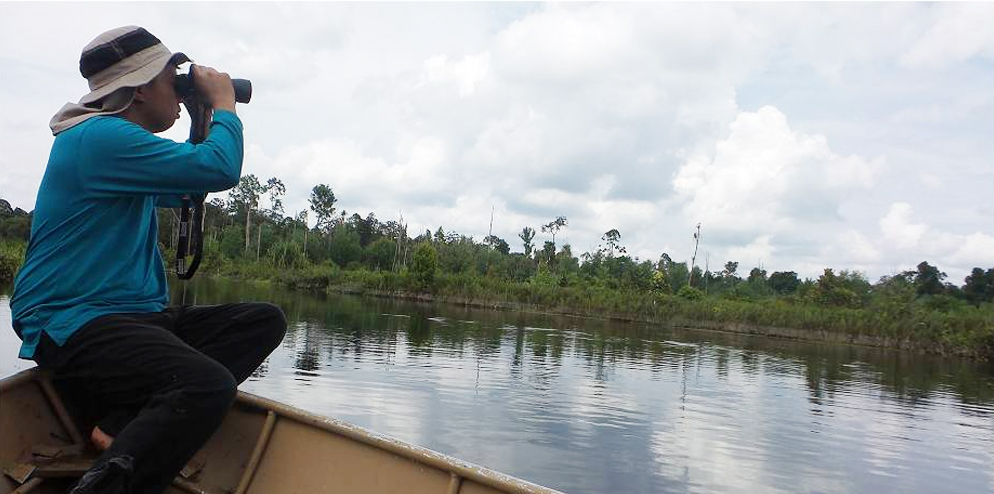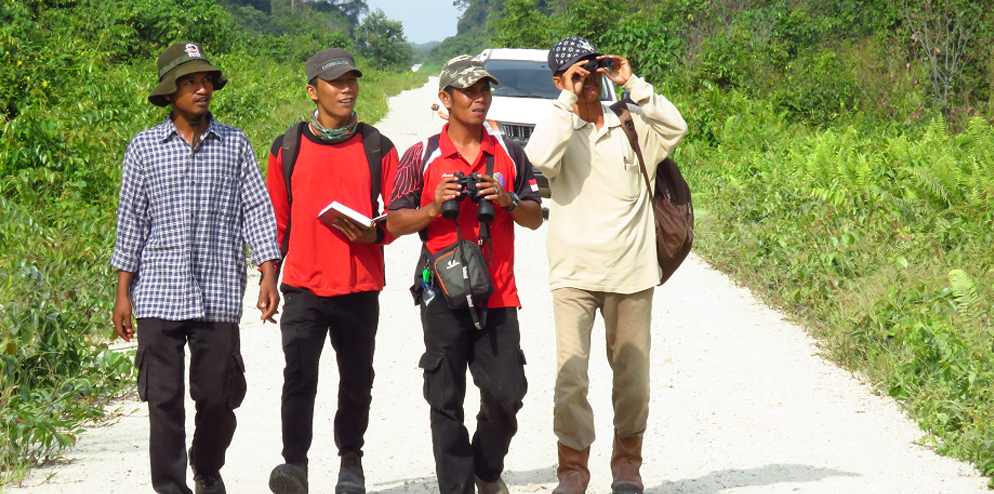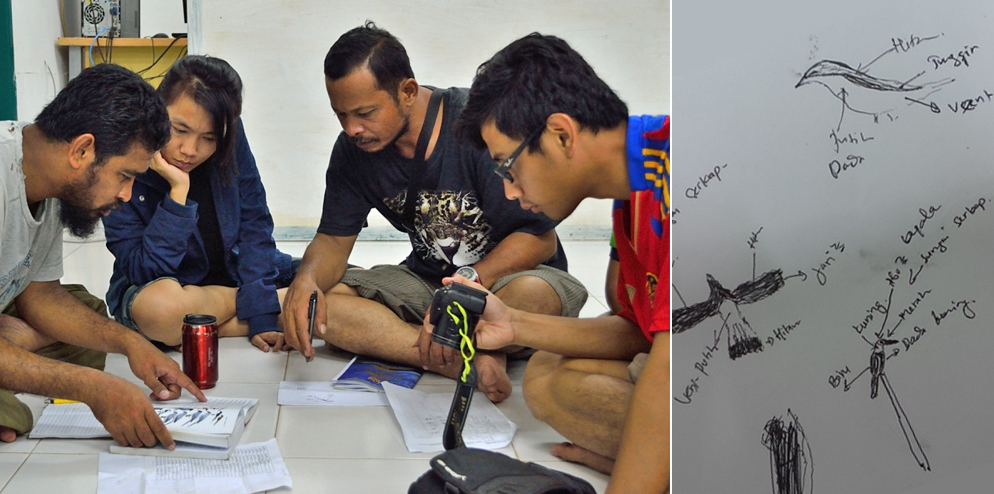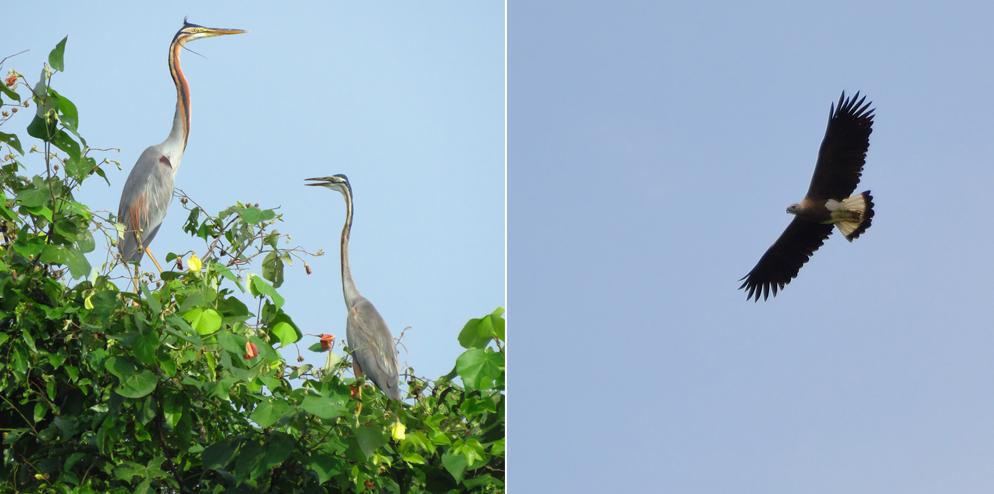February 07, 2017
KAMPAR PENINSULA – A team from Fauna & Flora International and Riau Ecosystem Restoration (RER) participated in the 2017 Asian Waterbird Census (AWC). In Indonesia, this global survey is organized nationally by Wetlands International-Indonesia Program in collaboration with the Directorate General of Forest Protection and Nature Conservation of the Ministry of Forestry.
The AWC occurs annually in January throughout the Asia-Pacific region, and runs concurrently with the International Waterbird Census which covers Africa, Europe, Central and West Asia and Latin America. Since 1987, the AWC collects information on waterbird populations, monitors the status and condition of wetlands, with the aim to grow public interest in waterbirds, wetlands and their conservation. The census includes 6,100 sites across 27 countries and provides a wealth of information to organizations and researchers to support initiatives by the Ramsar Convention on Wetlands, IUCN Global Species Program, Convention on Biological Diversity (CBD) and Birdlife International’s Important Bird Area (IBA) Program, among others.

Waterbird species such as egrets, herons, storks, ducks, cormorants, shorebirds are ecologically dependent on wetlands. The annual census is open to anyone interested in observing waterbirds and participants ranges from amateur bird watchers and nature enthusiasts to ornithologists and researchers.
The combined 13 personnel from FFI and RER conducted the morning and afternoon waterbird surveys on January 18-19 followed by debriefing sessions in the evening. The 13 participants were divided into two groups: Kotlyn Pasaribu lead a team of Made, Asrudi, Iqbal, Kristian, Tiurma and FFI’s Ornithologist Adi Kristanto (FFI Expert Ornithologist ) while Prayitno Goenarto led the team of Muhammad Iqbal, Ronyi, Mahendra, Suyoto and FFI’s Ganjar Cahyadi.

Bird watching began each day at 07.30 am for the two groups and included observations along the Kampar River, Sangar sub-village Serkap River, Tanjung Pandak and Turip River. Group 2 surveyed a lake, agricultural area, and along the Serkap River. Surveys were carried out on foot, by car and by boat. Each team was given binoculars, Global Position System (GPS), a field guide, notebooks and a camera. In general, habitats with high potential to support both resident and migratory waterbirds are not easily accessible and often require water transport. As such, survey participants were able to cover about 20% of the RER concessions in the Kampar peninsula.
In the evening, both teams gather for debriefing session after dinner. Groups discuss internally the water bird species and the number of individuals recorded, reviewing their sketches and photos taken during the survey. Field sketches are an important learning tool because they reflect an observer’s first impression of a bird and can contain key markings that lead to species identification.

The session concludes with a presentation of each team’s findings and a short recap of the new bird identification tips learned. FFI’s Ganjar mentioned that “Participation of RER in AWC 2017, can open up greater insight into the myriad of waterbirds that are found in the RER areas, especially for members of the RER team who are new to bird watching.”
The total number of water birds counted during the survey reached 200, comprising seven different species. The Purple Heron (Ardea purpurea) was the most common species encountered with a total of 142 individuals.
In addition to the 200 water birds , 64 non-water bird species were also observed and included iconic bird species such as the White-breasted kingfisher (Halcyon smyrnensis), Grey-headed Fish Eagle (Ichthyophaga ichthyaetus) and Rhinoceros Hornbill (Buceros rhinoceros).

According to FFI’s ornithologist Adi Kristanto, of the seven water bird species observed, none are currently listed as protected by the Government of Indonesia. However, this activity is a good first step towards monitoring the quality of RER’s wetland using the presence of water birds as biological indicator of habitat quality.
“Through routine data collection, RER can evaluate the quality of wetlands in the area. I hope in the 2018 AWC, RER will observe additional water bird species such as the White-winged Duck and storks of the Ciconiidae family which are endangered species and protected by the government of Indonesia, “said Adi on the last day of the survey.